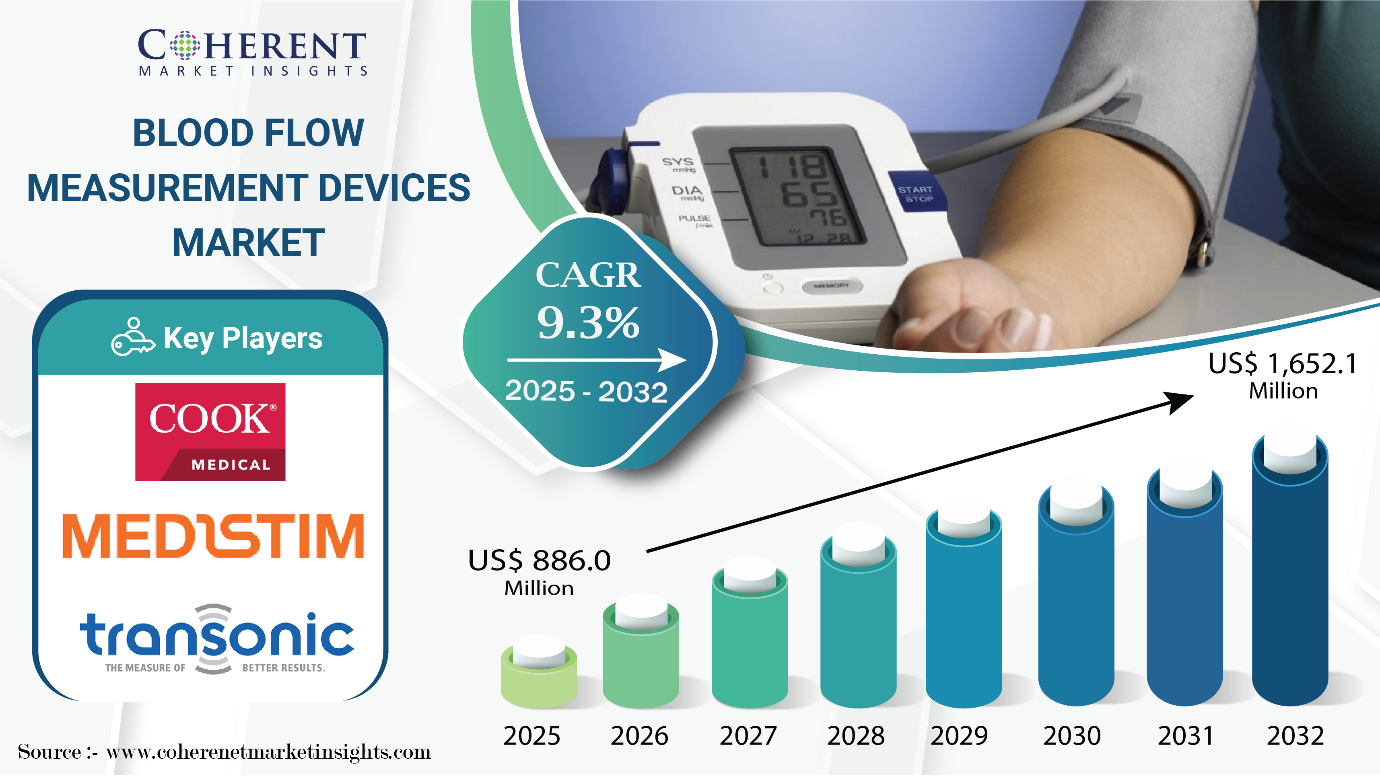AI Sentiment: Bullish
Reason: The blood flow measurement devices market is forecasted to grow significantly due to rising demand and technological advancements in healthcare.
The blood flow measurement devices market is projected to experience significant growth, with estimates indicating that it will surpass USD 1,652.1 million by 2032. This surge is attributed to the increasing demand for non-invasive diagnostics, which are becoming increasingly vital in modern healthcare.
One of the primary drivers of this market expansion is the rising prevalence of cardiovascular diseases globally. As more patients seek effective and less invasive methods for monitoring their heart health, the need for advanced measuring devices is paramount. These devices play a crucial role in diagnosing various conditions, monitoring treatment efficacy, and aiding in surgical procedures.
Technological advancements are also influencing the market positively. Innovative designs and features, such as portability and ease of use, are making these devices more accessible to healthcare professionals. This evolution enhances patient experience and boosts the adoption rate among medical practitioners.
Furthermore, the growing inclination towards preventive healthcare measures is expected to fuel market growth. As healthcare systems shift focus from treatment to prevention, blood flow measurement devices are likely to become a staple in routine health assessments. This trend reflects a broader movement towards proactive health management, where early detection and diagnostics can significantly impact patient outcomes.
Regions with developed healthcare infrastructures, particularly in North America and Europe, are anticipated to lead the market. However, emerging economies are also beginning to show promising growth potential as healthcare access improves and awareness of cardiovascular health increases.
In conclusion, the blood flow measurement devices market is on a trajectory of growth driven by technological innovation, increased prevalence of cardiovascular diseases, and a shift towards preventive healthcare practices. As these trends continue to evolve, the market is expected to thrive, offering significant opportunities for stakeholders involved in the development and distribution of these crucial medical devices.




